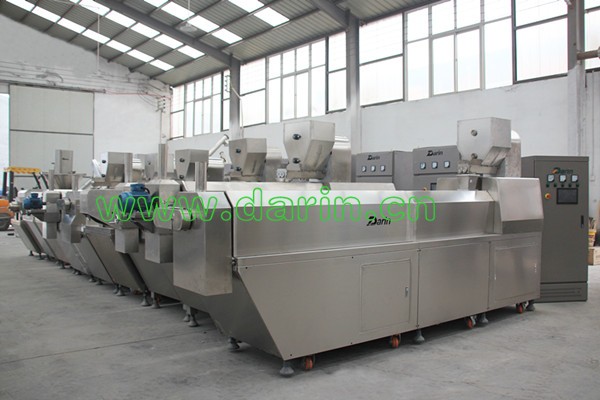
According to information released by the Municipal Bureau of Commerce, in the first three quarters of this year, the import and export of mechanical and electrical products in Tangshan City totaled 978 million U.S. dollars, a year-on-year increase of 22.5%. Among them, the total export of mechanical and electrical products of private enterprises reached 324 million U.S. dollars, which exceeded the sum of state-owned enterprises and foreign-funded enterprises in the same period, accounting for 55.39% of the city's exports of mechanical and electrical products, up 13 percentage points over the same period of last year. In the first three quarters of the year, there were 123 privately-owned enterprises with actual achievements in the export of mechanical and electrical products in the city, an increase of 19 over the same period of last year. Private enterprises have become a powerful booster for the export of mechanical and electrical products in Tangshan.
In recent years, the export structure of mechanical and electrical products in Tangshan has been continuously optimized to form an export-oriented industry. The city's commerce authorities are still firmly grasping the important opportunities for the coordinated development of Beijing, Tianjin and Hebei, and adopt a series of measures to encourage private enterprises to carry out technological transformation and innovation and upgrading. The first is all-round and multi-angle services for enterprises. To implement the agency service system for the top ten export pillar enterprises in Tangshan, to comprehensively and comprehensively help enterprises run through the administrative examination and approval issues of the ministry, provinces, and cities; joint customs, commodity inspection, and other departments to establish a coordination and contact mechanism for good customs clearance, Follow-up investigations on inspections, tax refunds, etc., coordinate and resolve existing problems in a timely manner, and create a favorable soft environment for the development of foreign trade. The second is to actively carry out policy business training. Two times a year, Tangshan City's foreign trade and export enterprises are given policy business training to allow enterprises to understand policies, make full use of policies, and make good use of policies to ensure that the “golden policy†exerts a “golden effect†and tap export potential. The third is to promote the transformation and upgrading of foreign trade. Promote the import of advanced technology equipment and shortage of resource products in Tangshan City. In order to promote Tangshan, an import interest subsidy policy was declared for the 36.92 million US dollars of advanced equipment and shortage resources imported by 8 companies, including Shougang Jingtang Iron and Steel Co., Ltd., Tangshan Oaseya Sanfu Chemicals Co., Ltd., and Hebei Ze'ao Spinning Co., Ltd. City industrial upgrading.
Brief Introduction
Food Extrusion is a form of extrusion used in food processing. It is a process by which a set of mixed ingredients are forced through an opening in a perforated plate or die with a design specific to the food, and is then cut to a specified size by blades. The machine which forces the mix through the die is an extruder, and the mix is known as the extrudate. The extruder consists of a large, rotating screw tightly fitting within a stationary barrel, at the end of which is the die.
Extrusion enables mass production of food via a continuous, efficient system that ensures uniformity of the final product. Food products manufactured using extrusion usually have a high starch content. These include some pasta, breads (croutons, bread sticks, and flat breads), many breakfast cereals and ready-to-eat snacks, confectionery, pre-made cookie dough, some baby foods, full-fat soy, textured vegetable protein, some beverages, and dry and semi-moist pet foods.
Process
In the extrusion process, raw materials are first ground to the correct particle size, usually the consistency of coarse flour. The dry mix is passed through a pre-conditioner, in which other ingredients are added depending on the target product; these may be liquid sugar, fats, dyes, meats or water. Steam is injected to start the cooking process, and the preconditioned mix (extrudate) is then passed through an extruder. The extruder consists of a large, rotating screw tightly fitting within a stationary barrel, at the end of which is the die. The extruder's rotating screw forces the extrudate toward the die, through which it then passes. The amount of time the extrudate is in the extruder is the residence time.
History
The first extruder was designed to manufacture sausages in the 1870s. Packaged dry pasta and breakfast cereals have been produced via extrusion since the 1930s, and the method was applied to pet food production in the 1950s. It has also been incorporated into kitchen appliances, such as meat grinders, herb grinders, coffee grinders, and some types of pasta makers. A similar functional process occurs when using pastry bags.
Effects
Extrusion enables mass production of food via a continuous, efficient system that ensures uniformity of the final product. This is achieved by controlling various aspects of the extrusion process. It has also enabled the production of new processed food products and "revolutionized many conventional snack manufacturing processes". The extrusion process results in "chemical reactions that occur within the extruder barrel and at the die.
Machine Photo:

Corn Flakes Extruding Line,Corn Flakes Production Line,Core Filled Food Extruder,Food Extruding Machine
Jinan Darin Machinery Co., Ltd. , http://www.globaldarin.com